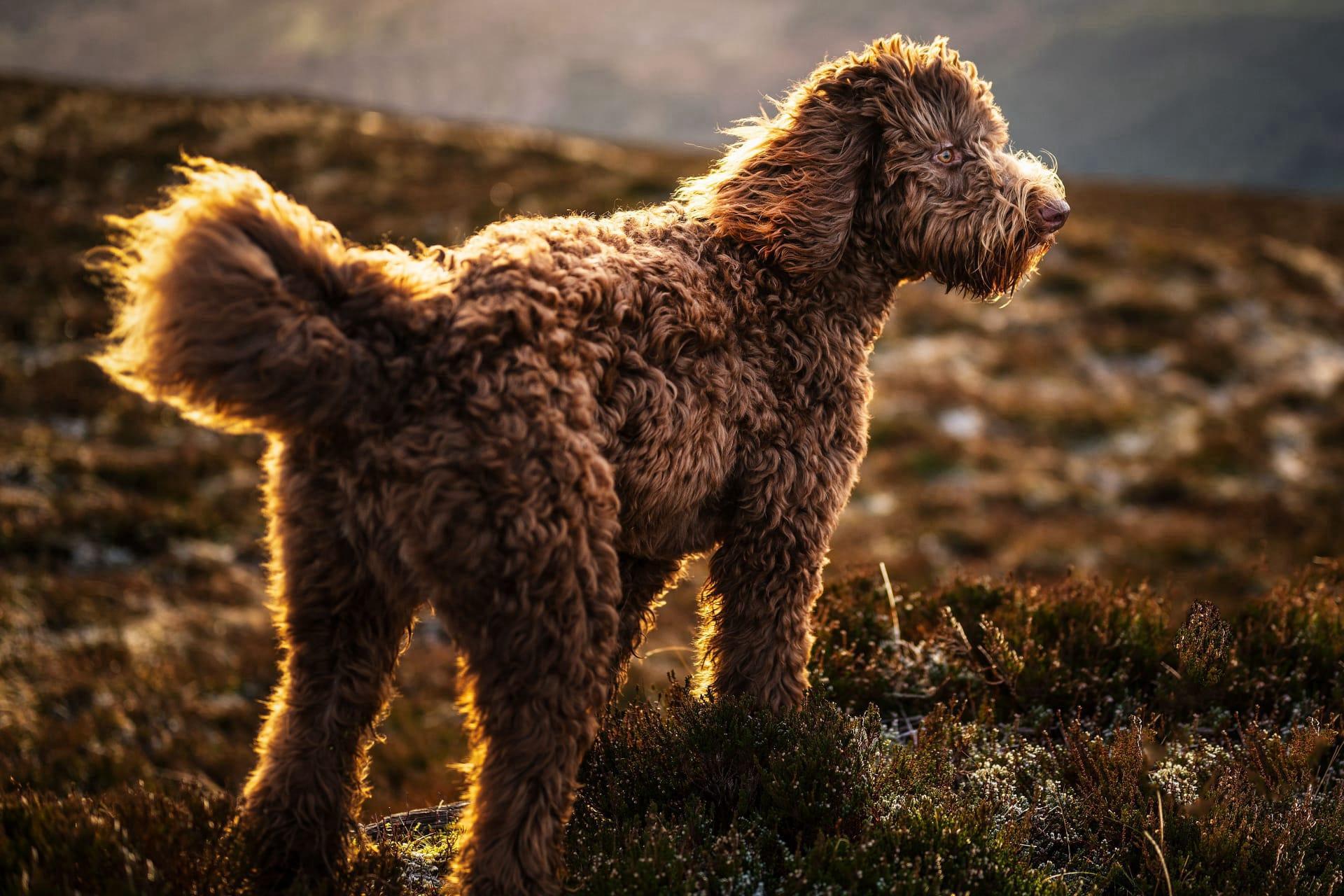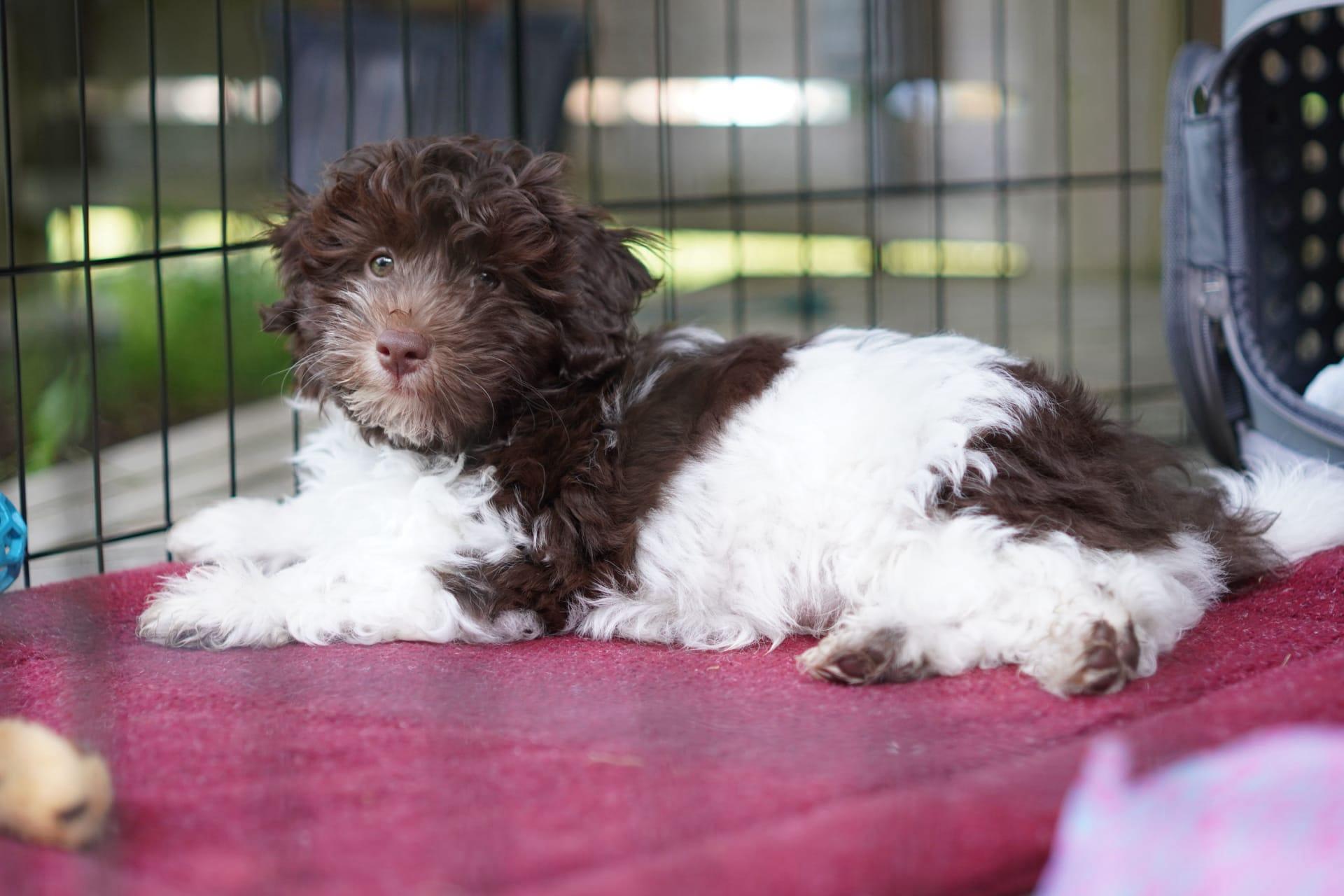Bernedoodle Characteristics
- Home /
- Mini Encyclopedia /
- Animal /
- Bernedoodle Characteristics
1
Bernedoodles, a charming blend of the Bernese Mountain Dog and Poodle, are celebrated for their varied sizes and notable longevity. Typically, they range from miniatures at around 18-22 inches tall and weighing 25-49 pounds, to standards that can reach 23-29 inches in height and weigh anywhere between 70-90 pounds. Their life expectancy impressively spans from 12 to 15 years, a testament to their robust health inherited from both parent breeds. This hybrid vigor contributes to their status as a beloved family pet, offering a balance between playfulness and calmness.
The coat of a Bernedoodle is its most distinctive organ, showcasing a unique mix that inherits the hypoallergenic traits of the Poodle and the thick, warm fur of the Bernese Mountain Dog. This remarkable coat varies from wavy to curly and comes in a multitude of colors, including black, white, and brown, often in captivating patterns. The primary function of this dense coat is to provide insulation and protection against varying weather conditions, making the Bernedoodle adaptable to both cold and warm climates. Its low-shedding quality also makes it an excellent choice for families with allergies, highlighting its practicality and appeal as a companion animal.

2
Question: What's the best way to train a Bernedoodle?
Answer: Training a Bernedoodle requires patience, consistency, and positive reinforcement. Known for their intelligence and eagerness to please, derived from both the Poodle's and Bernese Mountain Dog's traits, they respond well to rewards-based training. Starting training and socialization early is key to harnessing their potential and preventing the development of undesirable behaviors. Incorporating a variety of training methods such as obedience classes, agility courses, and daily training sessions can keep their agile minds engaged and active. Consistency in commands and rewards, along with plenty of affection, will ensure your Bernedoodle not only learns but also enjoys the training process, fostering a strong bond between pet and owner.

3
Bernedoodles exhibit a dynamic range of physical activity preferences, reflecting their mixed breed heritage. They are adaptable to various lifestyles, requiring moderate to high exercise levels based on their size. Smaller Bernedoodles might be satisfied with brisk walks and indoor play, while larger ones thrive on more strenuous activities like hiking or swimming. An ideal routine includes at least 30 to 60 minutes of daily exercise to maintain their physical health and mental well-being.
When it comes to feeding, Bernedoodles benefit from a balanced diet tailored to their size, age, and activity level. High-quality dog food, whether commercially manufactured or home-prepared with your veterinarian's supervision, should meet their nutritional needs. For an average-sized Bernedoodle, a diet rich in proteins and fats, with controlled portions to prevent overfeeding, is essential. Regular meals rather than free feeding, and monitoring for weight gain, ensure they maintain a healthy weight, crucial for their overall health and mobility.

4
Bernedoodles adapt well to a variety of living environments, thriving equally in spacious homes with yards and smaller living spaces like apartments, provided they receive sufficient exercise. Their versatility in climate adaptation, thanks to their insulating coat, allows them to enjoy both cooler and warmer climates. However, their well-being is significantly enhanced by environments that offer ample space for movement and mental stimulation, which reflects their need for engagement and affection from their human families.
The reproductive characteristics of Bernedoodles include a breeding approach that can involve both natural and assisted reproductive techniques, aiming for healthy offspring that inherit the best traits of both parent breeds. Litter sizes can vary, typically ranging from 4 to 10 puppies, depending on the size of the Bernedoodle. Responsible breeding practices also emphasize health screenings and genetic testing to ensure the long-term health and vitality of the puppies, underscoring the importance of ethical breeding in maintaining the breed's quality and health standards.

5
Book: "The Complete Guide to Bernedoodles: Everything You Need to Know to Successfully Raise Your Bernedoodle Puppy" offers an in-depth exploration into the world of Bernedoodles, covering the United States in the early 21st century. Authored by renowned dog trainer and breeder, Sherry Rupke, the book delves into the specifics of what makes Bernedoodles unique, including their health, training, and care requirements. Rupke's expertise provides readers with practical advice on how to nurture their Bernedoodle from puppyhood to adulthood, making it an indispensable resource for current and prospective Bernedoodle owners.
Book: "Bernedoodles: A Head to Tail Guide" is another essential read, penned by British canine expert, Barbara Anderson, in the late 2010s. This book provides a comprehensive overview of the breed, from its history and development to its characteristics, grooming needs, and common health issues. Anderson's thorough research and accessible writing style equip readers with the knowledge to understand and care for their Bernedoodle comprehensively, ensuring a happy and healthy relationship between dog and owner.